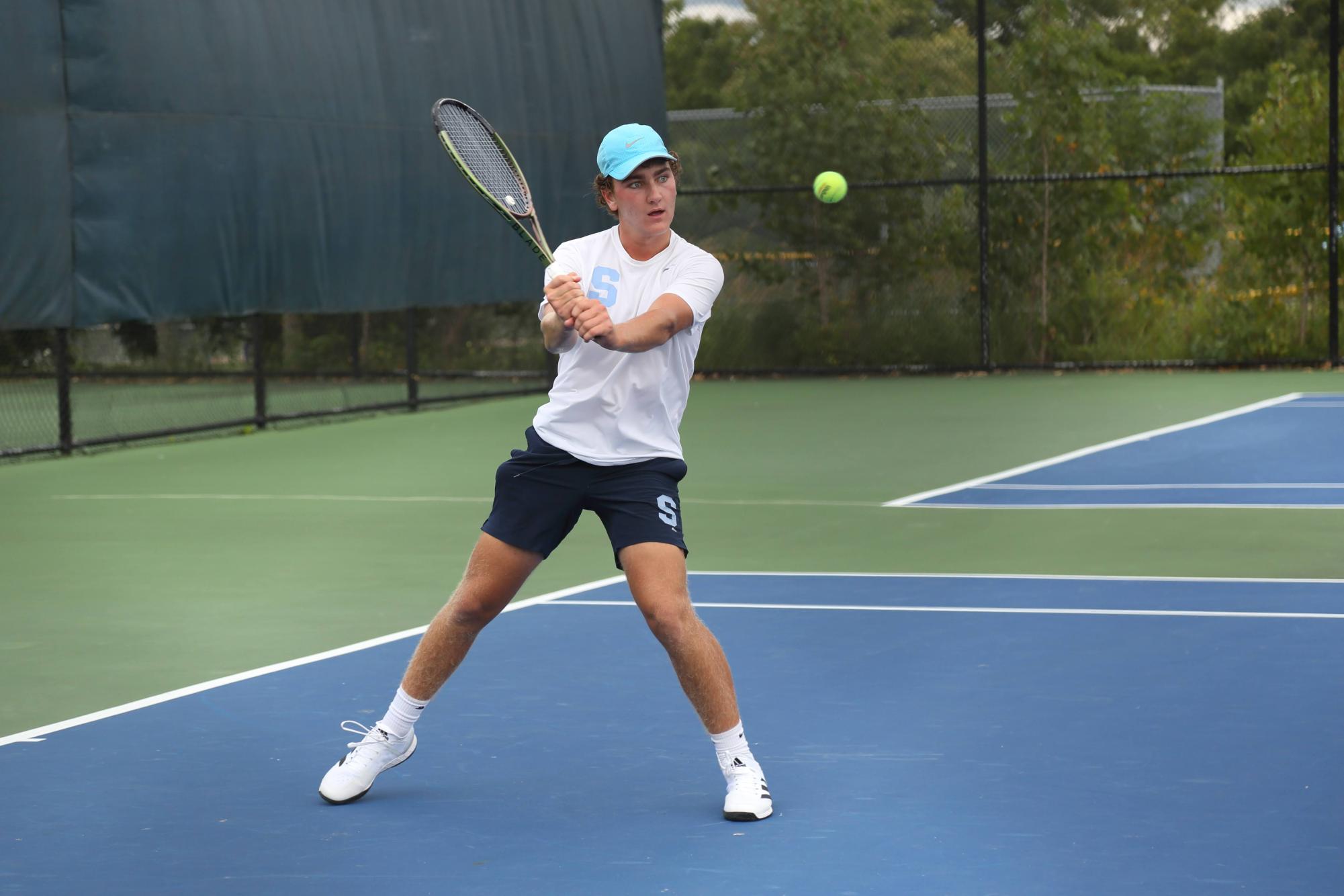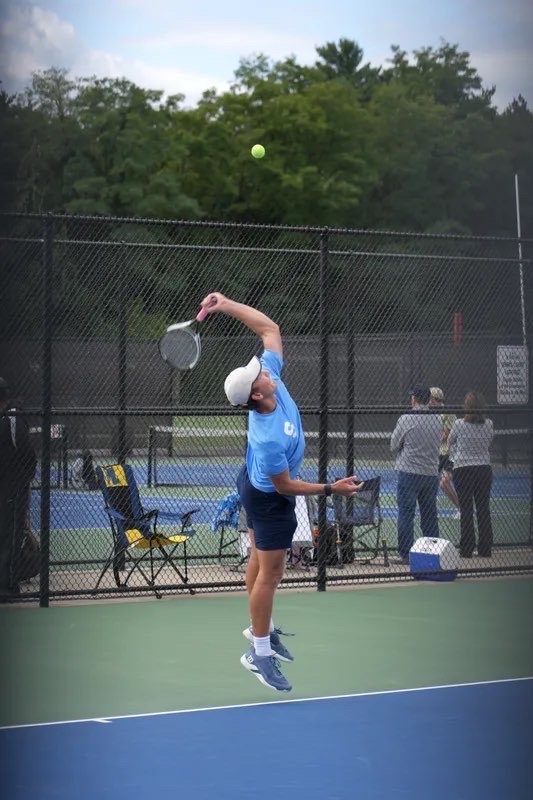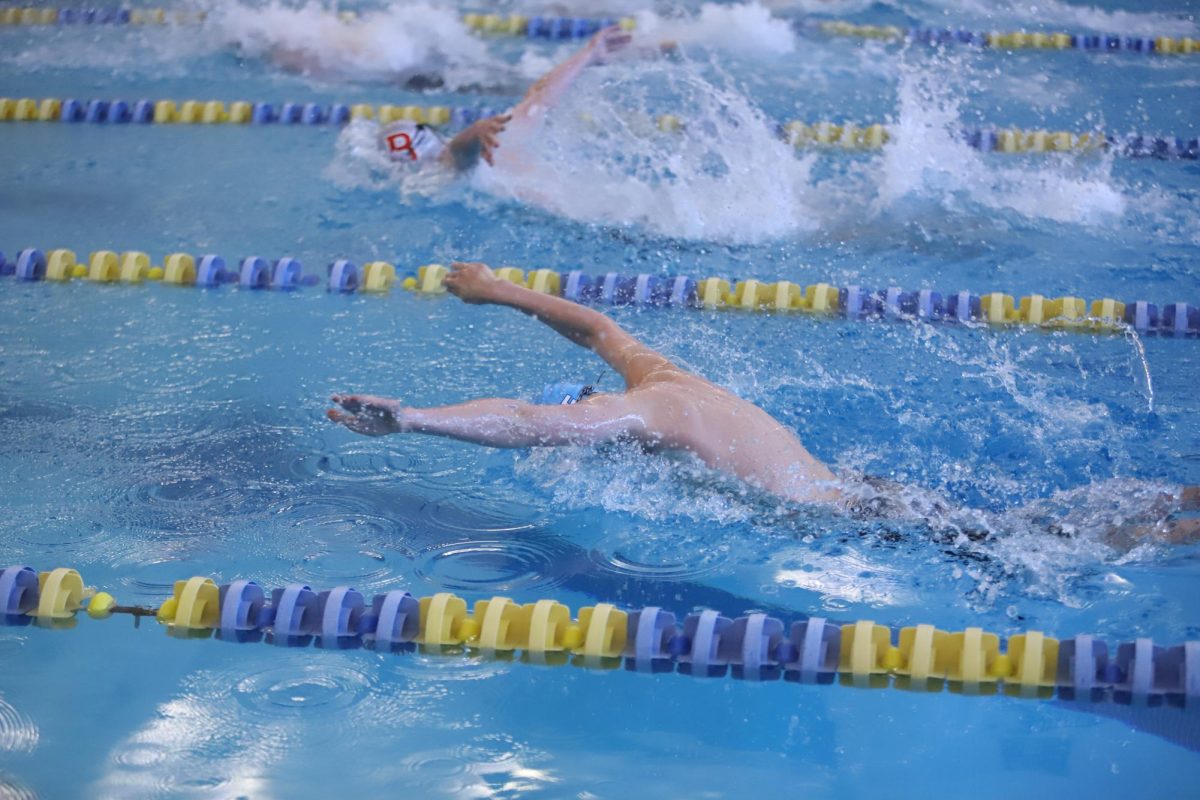Enter the ground of any tennis match and you will hear the satisfying sound of balls being struck, new shoes squeaking, impassioned let’s gos and c’mons, and perhaps, a loud AH accompanying each swing.
Grunts in tennis come in many forms from the more garden variety ahh, a high-pitched ey, or the more rare two-syllable ey-yah. Opponents or even spectators sometimes begin to complain, annoyed, about the sheer volume of the grunt.
But grunting seems to be an accepted part of the game. “Some players just breathe out a little bit louder, I guess,” says Justin Woo (‘27), the number three singles on the Skyline Boys’ Varsity Tennis Team. “I don’t really do it on purpose.” Woo has the loudest, most recognizable grunt of the entire team, a signature BAH. For Woo, grunting is as routine as a forehand or a backhand.
Members of the tennis team grunt for various reasons, whether it be to release anger or feel more natural and free. “I’d say [when on] neutral to offense, typically I grunt,” said Connor Wilcox (‘26), the number one singles player on the Skyline Boys’ Varsity Tennis Team. Because grunting has been shown to increase ball velocity while not expending excess energy (Callison et al., 2014), Wilcox’s grunt allows him to hit the ball harder through the court and get his opponent on defense more.
Excessive grunting has also been shown to negatively impact an opponent’s focus on the ball and their reaction time (Sinnett et al., 2010). Most of Skyline’s tennis team doesn’t mind it as long as it isn’t too extravagant, and agreed that the best way to deal with grunting is to ignore it. “If you’re yelling, like, five seconds after you’re hitting the ball, you gotta stop that,” said Wilcox. “Other than that, I think [grunting] is fine.”
What if this “little bit louder” becomes a lot louder? Recently, professional tennis players such as Victoria Azarenka and Maria Sharapova have become notorious for their shrieking grunts: Azarenka’s has been measured to be at 105 decibels, according to the Telegraph, the same intensity as an ambulance siren. “I feel like [grunting] is a trend– it’s picked up a lot over the last few years,” says Skyline Boys’ Varsity Tennis Team Coach Zosia Casterline.
Some wonder if grunting should even be regulated at the professional level: for example, a tennis referee told professional tennis player Monica Seles to strike the ball in silence, resulting in a devastating loss in the finals at Wimbledon in 1992. Both the Women’s Tennis Association (WTA) and Association of Tennis Professionals (ATP) have rules punishing distractions, including grunting: the WTA determines it an “involuntary hindrance.”

“It’s more pleasing to watch a match without grunting,” says Skyline parent Ranjit Aiyagari, who watches a lot of professional tennis. “Sometimes I’ll turn the volume down or turn it off if the players are grunting a lot…. It’s also not pleasing as a fan.”
Spectators bring more negative attention to grunting in women’s professional tennis than men’s tennis. “Women’s grunts are higher-pitched,” said Woo. This higher pitch may make them more annoying: studies have shown that high-pitched sounds in general evoke responses in the brain that make them sound more unpleasant to listeners.
Even if grunting can be a bit annoying, Aiyagari does not believe grunting should be banned. “I think at the end of the day, as a spectator, you want to see the competitors perform at their best,” says Aiyagari, “and if [grunting] is what it takes them to perform at their best and to play their best, that’s what you paid the money for… to see them play the best tennis they can possibly play.”







